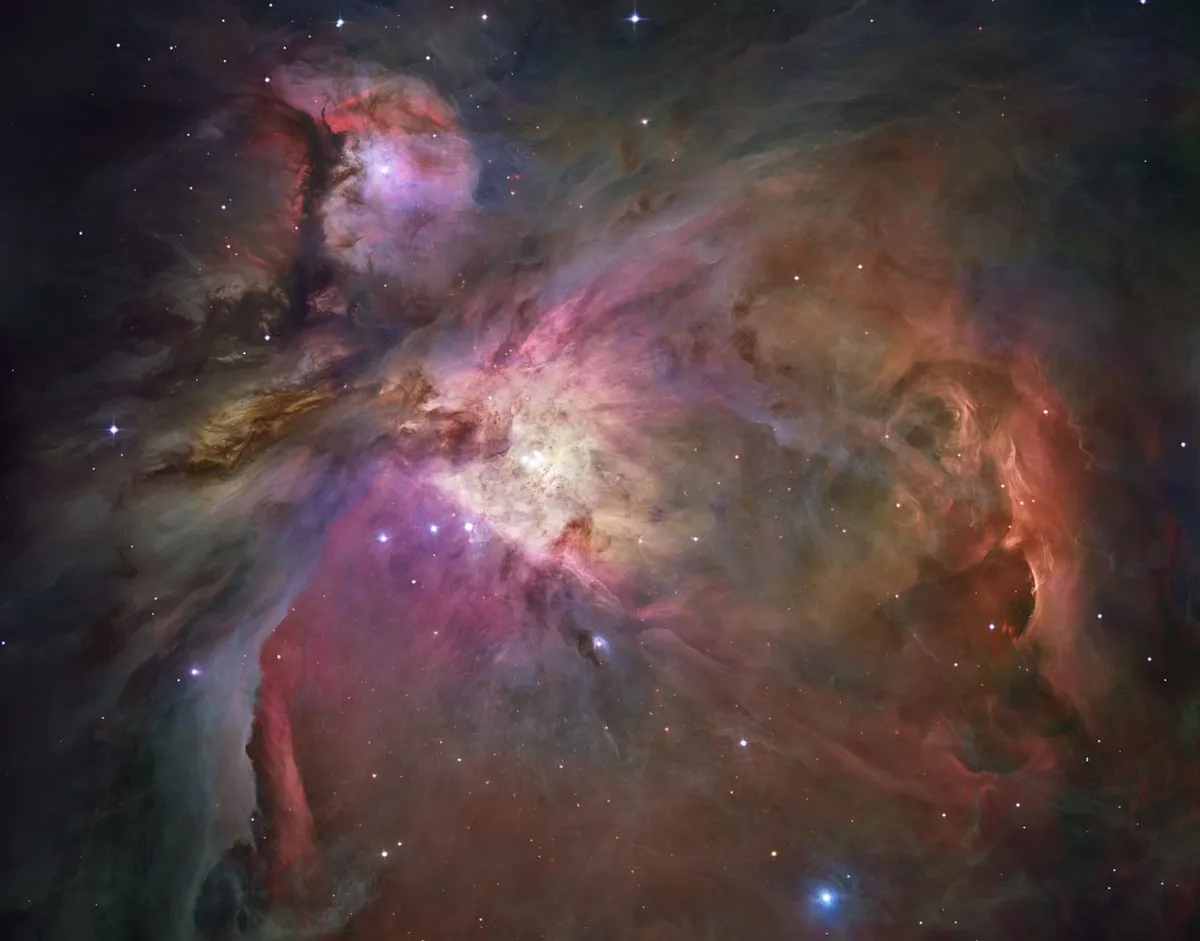
The Orion Nebula looks absolutely stunning in this beautiful image captured by the Hubble Space Telescope and released in 2006.
Hubble's view reveals the star-forming region of gas and dust in incredible detail, and features over 3,000 stars of various sizes.
The Orion Nebula is so-called because it is part of an asterism called Orion's Sword, located in the familiar Orion constellation (need help discerning the difference between constellations and asterisms?).
It is known as a star-forming region, because the presence of gas and dust produces ideal conditions under which stars can be born.
As if to make the point, the bright central region in this image pinpoints the location of four of the most gigantic stars in the nebula. These are called the Trapezium Cluster because of the shape formed by their arrangement.
Ultraviolet light from these stars carves out the gas and dust in the nebula and actually disrupts the development of newly-formed stars.
The Orion Nebula is about 1,500 lightyears away and is a favourite target for amateur astronomers who like to capture deep-sky objects.
If you are an astrophotographer, read our guide on how to photograph the Orion Nebula.
Image stats
Observatory Hubble Space Telescope
Release date 11 January 2006
Image Credit NASA,ESA, M. Robberto (Space Telescope Science Institute/ESA) and the Hubble Space Telescope Orion Treasury Project Team
